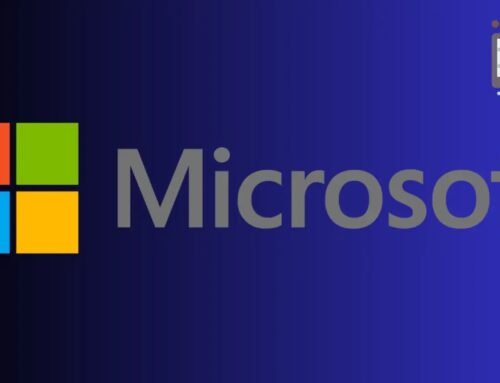
Simple Steps for Attack Surface Reduction
Simple Steps for Attack Surface Reduction: Fortify Your Digital Perimeter
Cybersecurity leaders understand the increasing pressure to preempt attacks. The most effective defense often begins with foundational configurations, establishing a robust security posture from the outset. This piece explores how strategic default policies—like deny-by-default, mandatory Multi-Factor Authentication (MFA), and application ringfencing—can significantly diminish organizational risk by eliminating entire categories of potential exploits. From disabling pervasive Office macros to blocking unauthorized outbound server connections, proactive measures dramatically strengthen your cyber defenses.
The Imperative of Proactive Defense
Traditional cybersecurity models often focus on detecting and responding to threats after they’ve breached initial defenses. However, a more effective strategy involves minimizing the pathways attackers can exploit in the first place. This concept, known as attack surface reduction, is about shrinking the digital footprint an adversary can target. By making thoughtful, security-conscious choices at the policy level, organizations can fundamentally alter the risk landscape in their favor.
Deny-by-Default: The Foundation of Zero Trust
The principle of “deny-by-default” is a cornerstone of a robust security architecture, closely aligned with the Zero Trust model. Instead of explicitly defining what is forbidden, deny-by-default dictates that anything not explicitly permitted is automatically denied. This approach significantly reduces the likelihood of unauthorized access or activity. For instance, network firewalls configured with a deny-by-default rule will block all traffic unless a specific allowance has been configured. This prevents many common network-based attacks that rely on open ports or misconfigurations.
Mandatory Multi-Factor Authentication (MFA) Enforcement
Credential theft remains one of the most common initial access vectors for cybercriminals. Even strong passwords can be compromised through phishing, brute-force attacks, or data breaches. Mandatory Multi-Factor Authentication (MFA) adds a critical layer of security by requiring users to provide two or more verification factors to gain access to an account. This typically involves something the user knows (password), something the user has (a phone, a hardware token), or something the user is (biometrics). Enforcing MFA across all critical systems and applications drastically reduces the risk associated with compromised credentials, making it significantly harder for attackers to gain unauthorized access even if they obtain a password.
Application Ringfencing™: Containing the Blast Radius
Application Ringfencing, a proprietary approach, significantly enhances security by creating isolated environments for applications. This mechanism ensures that if one application is compromised, the attacker’s ability to move laterally or impact other systems is severely limited. Think of it as segmenting your applications, much like network segmentation isolates parts of your infrastructure. This containment strategy is particularly effective against attacks like the one leveraging the CVE-2021-44228 (Log4Shell) vulnerability, where a compromised application might attempt to reach out to arbitrary external resources. By restricting an application’s outbound connections and internal communications to only what is absolutely necessary, you effectively “ringfence” its potential for damage.
Disabling Office Macros: Mitigating a Persistent Threat
Microsoft Office macros have been a favored tool for attackers for years, often used to deliver malware through seemingly innocuous documents. Despite awareness campaigns, social engineering tactics leveraging macro-enabled documents continue to be successful. A critical step in attack surface reduction is to disable Office macros by default for users, especially those originating from the internet. For organizations that require macros for legitimate business processes, strict policies should be implemented, such as digitally signing macros and only allowing signed macros from trusted publishers to execute. The vulnerabilities associated with macros are well-documented, often preceding specific CVEs as a general attack vector.
Blocking Outbound Server Connections: Limiting Exfiltration and C2
One common phase in an attack lifecycle is command and control (C2) communication and data exfiltration. Attackers often attempt to establish outbound connections from compromised servers to their own infrastructure to receive commands or send stolen data. Implementing strict egress filtering policies that block all unauthorized outbound server connections is a powerful defense. This means only allowing necessary connections (e.g., to patch servers, specific external APIs) and denying everything else. This significantly hinders attackers’ ability to maintain persistence, exfiltrate data, or deploy further malicious payloads, even if they manage to breach an internal server.
Remediation Actions: Practical Steps for Reduction
- Implement Deny-by-Default: Review and reconfigure firewalls, network access controls, and application policies to operate on a deny-by-default principle. Regularly audit these configurations.
- Enforce Universal MFA: Mandate MFA for all user accounts, targeting administrator accounts first, then expanding to all user accounts and applications. Utilize strong MFA methods like FIDO2 security keys where possible.
- Adopt Application Ringfencing: Explore and implement solutions that provide application isolation and sandboxing capabilities. Define strict allowed communication policies for each application.
- Disable Untrusted Office Macros: Configure Group Policies or equivalent settings to disable macros from the internet by default across your organization. Implement centrally managed macro security settings.
- Harden Outbound Egress Filtering: Implement network policies that restrict outbound traffic from servers and user workstations to only approved destinations and ports. Use proxy servers or next-generation firewalls for enhanced control.
- Regularly Audit & Update: Continuously audit your configurations and policies. Ensure all software and operating systems are patched and updated to mitigate known vulnerabilities, such as those related to CVE-2022-30190 (Follina).
Conclusion: Setting the Standard for Security
Reducing your attack surface isn’t a one-time project; it’s a continuous commitment to proactive security. By strategically implementing foundational policies like deny-by-default, enforcing pervasive MFA, utilizing advanced application isolation techniques like Ringfencing, and diligently controlling common vectors such as Office macros and outbound network traffic, organizations can dramatically fortify their digital perimeters. These initial, critical configurations set the stage for a resilient security posture, allowing leaders to get ahead of attacks before they even begin.





